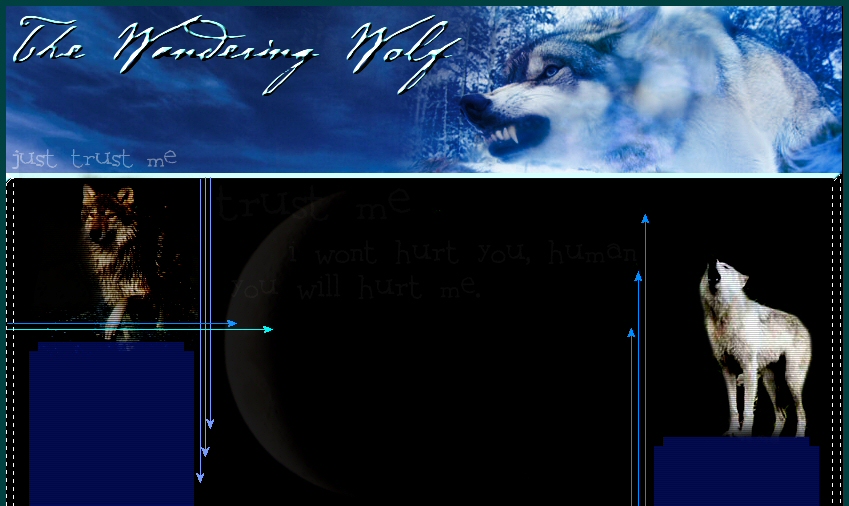

.: The Wolves :.
.: WSC Animals :.
.: The Cub :.
.: The Handwriting
.: My ABCs
.: The Basics
.: Googlism of Jade
.: The Pictures
.: The Pets
.: The Quizzes
.: The Art
.: Sister Sites :.

.: The Site :.
.: For A Wanderer
.: Competition :.
.: Contact :.
.: Gray Fox :.

Geographic Range: Southern Canada to northern Venezuela (South America), excluding northwestern United States.
Status: Fairly common in southeastern counties of MN
Height: About 14 inches at the shoulder. THeir legs are reltaively short compared to the red fox. The overall body length is up to 47 inches.
Weight: 6 - 15 pounds, males slightly heavier than females
Descriptions: The gray fox is slightly smaller than the red fox and has coarse, salt and pepper gray hair. Black makrings on the head, nose and muzzle. Medial black stripe down the top surface of the tail with a black tip. (Not a whip tip like red foxes)
Habitat: Woodlands, forests, abandoned hay fields and pastures, thick shrubs.
Typical Diet: Virutally every kind of meat, fruit, vegetable, or insect. Small mammals especially cotton-tail rabbits and favorites. Opportunistic foragers, using hunting techniques from stalking to dash and grab. The best known technique is the 'mouse pounce' which is done by jumping up to 3 feet above the ground and diving, front paws first, onto the prey. The impact stuns the prey, or flushes it, allowing the fox to cath it.
Similar Species: Red fox, Kit fox, Swift fox. Each of those are about half the size of the Gray fox. The Red fox has the largest range in North America. The Kit fox occurs in all 4 southwestern deserts. The Swift fox does not generally occur in desert environments.
Life Span: About 6 years in the wild, about 8 in captivity.
Special Notes:
- Oura (Gr) the tail; kuon (Gr) a dog
- The gray fox is the only member of the dog family that can climb trees. It can reach speeds of 35 mpg for short distances. It is sometimes called the "tree fox" or the "cat fox." There is a population of red foxes in Newfoundland that can reportedly climb trees.
- The pupils are oval-shaped rather then slit-like.
- The gray fox is smaller then a coyote.
- They are primarily nocturnal, but may forage during the day, seeking small mammals.
- The female may den in a hollow tree or dig a den. The den may be as long as 75 feet and can have 10 or more exits. There are usually numerous side chambers used for food storage and the transfer of young once a chamber is too soiled to use.
- Gray foxes mate in February or March
- Gestation is about 52 days, young are born in April or May
- 3-7 pups are dark brown and born blind. Their eyes open around 10 days.
- The young venture out of the den after about 4 weeks and usually wean around 10 weeks
- The father provides food for the entire family during this time.
- The family remainds together until late fall, foxes are generally solitary during winter.
- All anids have a supracuadal gland about half way down the tail. It gives off a strong musky smell and is used mostly during breeding and whelping seasons.
- Gray foxes are quite territorial and mark their territories and conspicuous landmarks.
- A pungent odor, similar to skunks, is evident where gray foxes frequently scent mark.
- Gray fox vocalizations include yapipng, howling, barks, whimpers and screams.
- They descend from trees by backing down like a cat or a bear. They are able to rotate their front arms.
- Gray foxes have few predators. The young are prey for bobcats, owls, hawks, and coyotes.